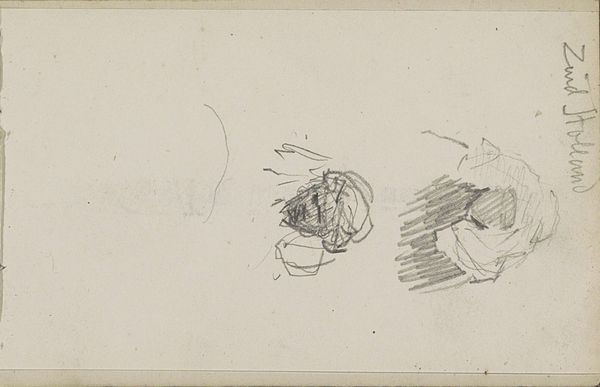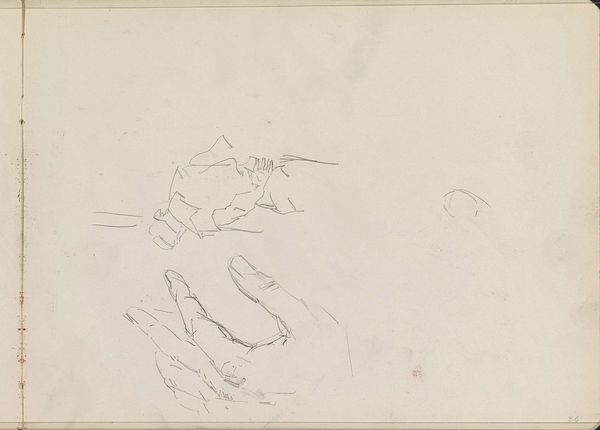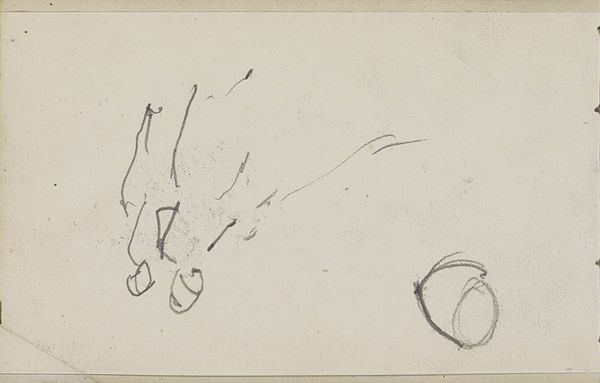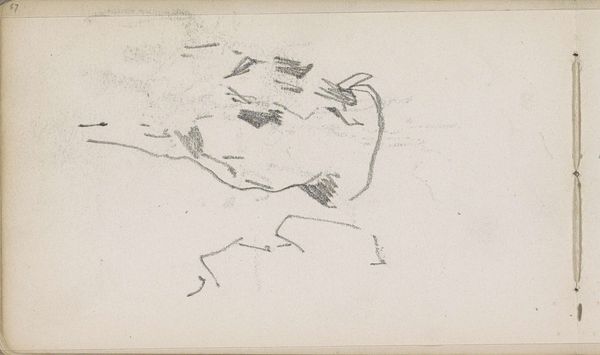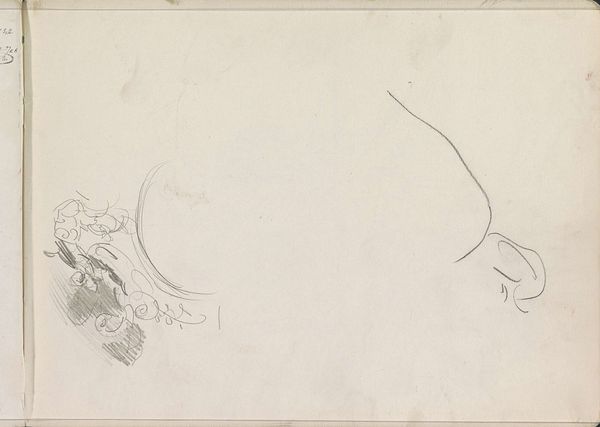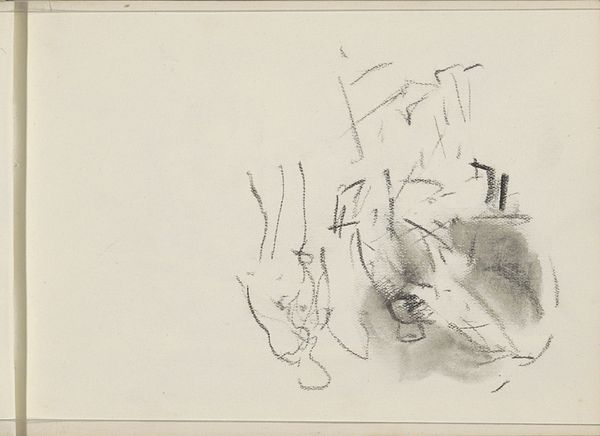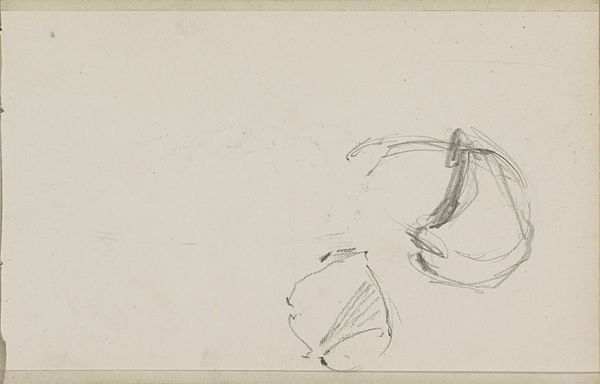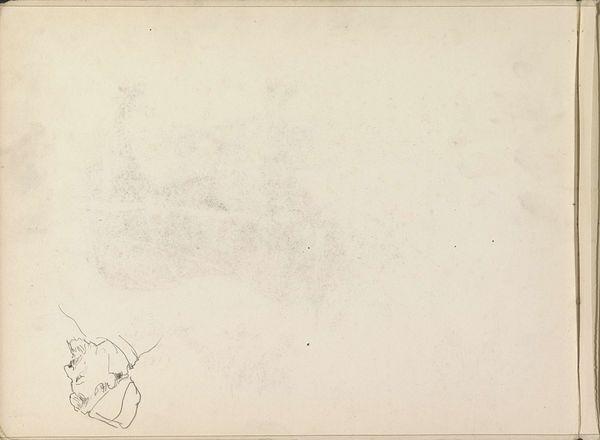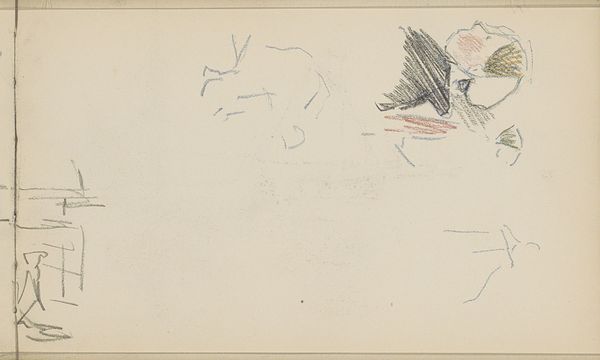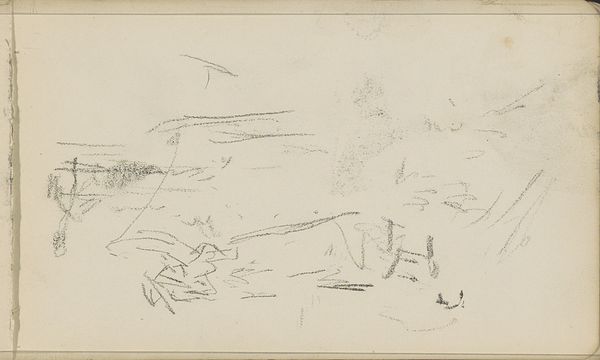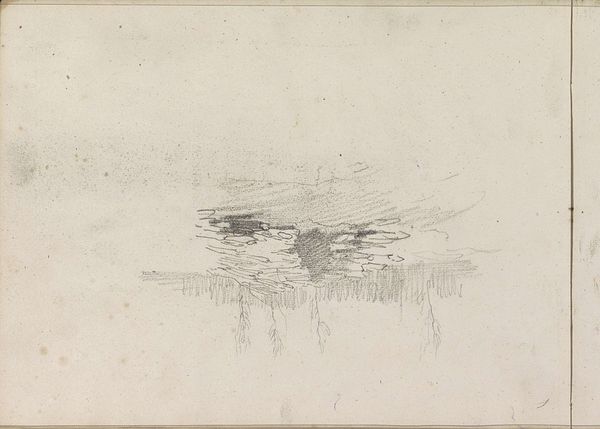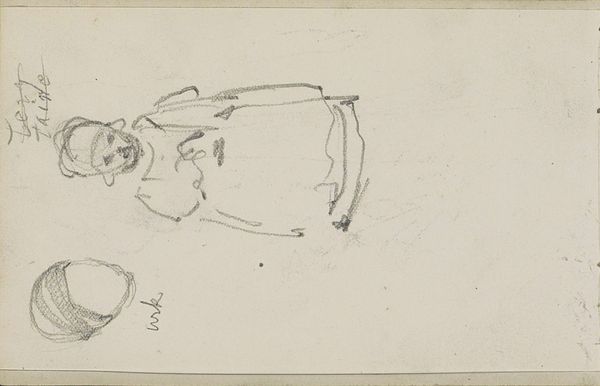
Copyright: Rijks Museum: Open Domain
Curator: Here we have "Vrouwenhoofd met hoed," or "Woman's Head with Hat," a drawing rendered circa 1915 to 1925. It's a pencil drawing by Isaac Israels, now residing in the Rijksmuseum. What strikes you most upon viewing this artwork? Editor: The ephemerality, definitely. There's a real sense of the immediate here, like catching a fleeting glimpse. The sketch feels incomplete but full of energy. It looks almost like a preparatory drawing – a spontaneous study, perhaps. Curator: Indeed, the Impressionistic touch is evident in its fleeting quality. It perfectly reflects the movement's capturing the transient nature of modern life. Observe how the delicate strokes and unfinished quality emphasize the sensation of the moment. And yet, this “incompleteness” presents its own aesthetic completeness, the rough strokes adding dimension in unique ways. Editor: The sketch embodies the era. The woman’s hat seems to signify the social conventions for women during this period and even seems to define and possibly constrain the female identity. This also prompts one to consider how art academies also began teaching female artists and including women in their portraiture work. Curator: That's an interesting point. Israels himself navigated social conventions and integrated into various circles—his subject choices definitely mirror that and he presents figures within these realms, whether consciously or unconsciously adding social commentary with those subjects is the real question. Editor: And the artistic movements he chose to align with had strong social and political leanings as well. Do you see him reflecting social commentary in his art, though, based on these visual components here, the deliberate use of light, shadow, and contour? Or just the formal elements as signifiers? Curator: Israels employed impressionistic brushstrokes that often conveyed certain atmospheric conditions or psychological impressions. While this work seems to capture the surface details, it also presents the viewer with questions related to deeper character meaning—more about what meets the eye, at surface level. What are your final impressions of this work, particularly given what we have said? Editor: This quick study makes me reflect on the complexities embedded within the art world and social world it once portrayed. Despite being incomplete, it provides complete insight to contemplate the art and its ties to a specific historical milieu. Curator: Well said. The piece captures both Israels’ technique and its significance within broader aesthetic and societal trends, and highlights the relationship between artistic rendering and sociocultural documentation.
Comments
No comments
Be the first to comment and join the conversation on the ultimate creative platform.

